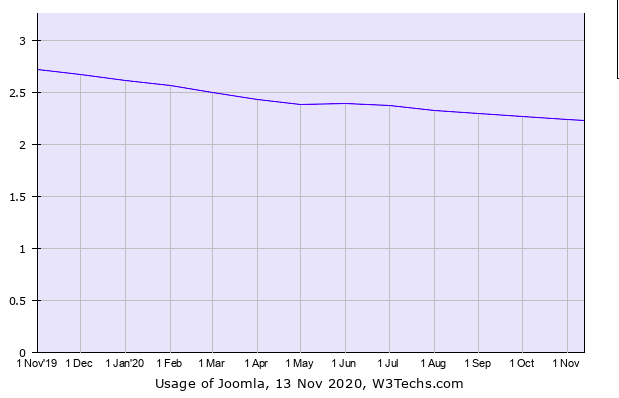Is Joomla Dead in 2020?
The fluctuating value of the Open Source CMS, Joomla, has often stirred a debate. The developer in the community ponders and discusses how the CMS had lost popularity for quite a phase. Well, every business goes through a lean curve that might seem to sink. Joomla saw it too, and we are here to discuss that.
So, let’s dive into the state of Joomla, from where it began, the trajectory it has traveled so far, and it’s current phase.
Going back in time
Joomla began with an excellent kickstart, becoming the prime choice for many developers in the CMS space. Though there are many other open-source CMS platforms, Joomla was picked up by business website owners. Its distinct benefits and advanced capabilities made it one of the top 3 CMS’s.
From here, Joomla saw a constant improvement. It gained a reputation as a middle ground between the two leading CMSs - WordPress and Drupal. While WordPress is for site owners not wanting to invest in technical know-how, Drupal is for enterprise-level businesses. Therefore, Joomla hit the right cords with the audience that found themselves somewhere in the middle. The high profile websites currently powered by Joomla are Intelligence.gov and Ben's Guide to the U.S. Government, both being critically affiliated to the U.S. Govt.
Point of stagnation
By gaining the most development, WordPress now powers about 1/3rd of all websites on the internet. Mostly lured by its entry-level, easy to use interface, WordPress took away the limelight in the CMS world. Where it lacked, Drupal took the opportunities and made a mark with leading enterprises and government organizations, like the White House’s official website, for its exceptional security on offer.

In the above image, the position of Joomla is still below Drupal, WordPress, and others.
Joomla’s Problematic areas
We clearly see a downward fall in Joomla's interest over time since 2004 in the graph below. This shows the trends have declined for the CMS in the marketplace and not many are searching or looking for Joomla services in recent years.

What made Joomla’s success curve tank for a rough patch:
- Joomla has “low traffic” websites in its kitty.
- Since it is open-source, organizations opting for Joomla are not investing their time and effort in making it a better place.
- 7,700 available extensions are restricted in their functionality, and many are outdated. Though there are updates, they are not constant enough to catch the eyeballs.
- Lack of regular updates and user-friendly extensions in the repository.
Along with other market factors, Joomla’s legitimate use cases have dropped drastically since 2017.
These shortcomings lead to a downward trend, as witnessed above in the graph and further in the talent pool. It is a concern that Joomla should think through as a single result can lead many to draw a misinformed conclusion.
However, there’s always a flip side to the story. The popularity of the "Joomla Developer" hasn't dwindled in the last few years. The trumpet of WordPress’s popularity has shaken Joomla for some. Joomla's development remains a good career opportunity for people looking in the right direction.
Positive End-Note
Every business goes through a rough patch and drifts towards a downward curve in the journey. Today, it might be tough for Joomla to compete with giants like WordPress, but it has not lost its chance to get back. As a great CMS with an enthusiastic community, Joomla has a long competitive journey, but it hasn’t lost it yet.


